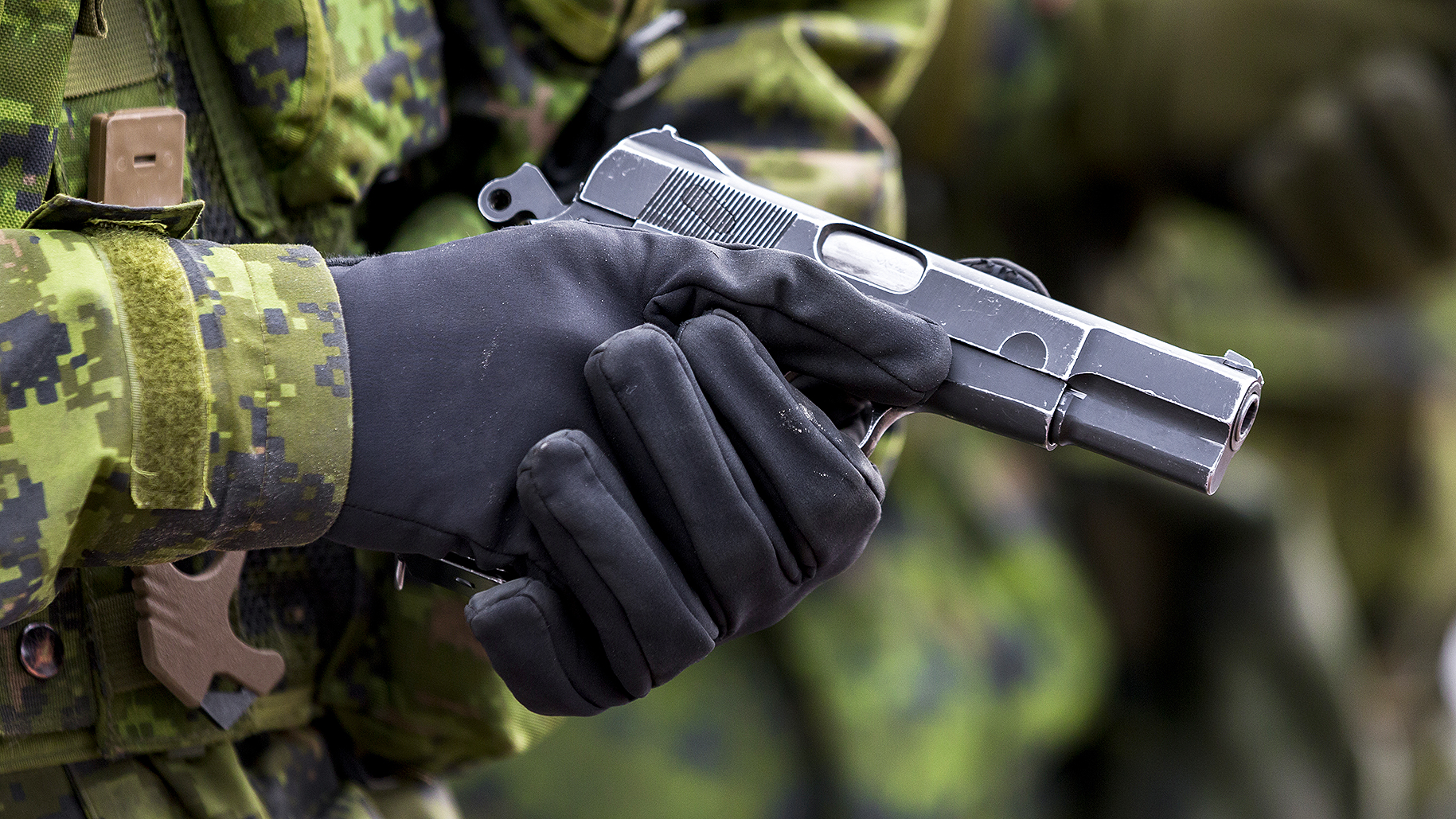The Canadian military is set to finally part with its remaining World War II-era 9mm Browning Hi-Power pistols by the of the year. That the end is in sight for the Hi-Power’s service in Canada comes as the country recently received the final deliveries of the 9mm Sig Sauer P320, which are replacing the classic Hi-Powers.
The updated timeline for Canada’s disposal of its Hi-Powers was first reported by David Pugliese of the Ottawa Citizen, citing Cheryl Forrest, a spokesperson for Canada’s Department of Defense. At present, none of the roughly 11,000 pistols left in the country’s inventory have been disposed of (i.e., destroyed), Forrest confirmed. It is possible that a select number might be kept by the Canadian military for specific training purposes, or other special uses, although a firm decision has not been made as of yet, she said.
It was in 1944 that the Canadian military began using the Hi-Power. Chambered in the 9mm Luger cartridge, the Hi-Power (originally known as ‘High-Power’) is a semi-automatic pistol made of steel. The double-stacked magazine design boasts 13-rounds standard which, for the time at least, was a very large magazine capacity. The single-action only pistol is cycled via a short-recoil operated tilting barrel. The tilting barrel design is used in most modern semi-automatic pistols and is commonly referred to as the “Browning action” today.
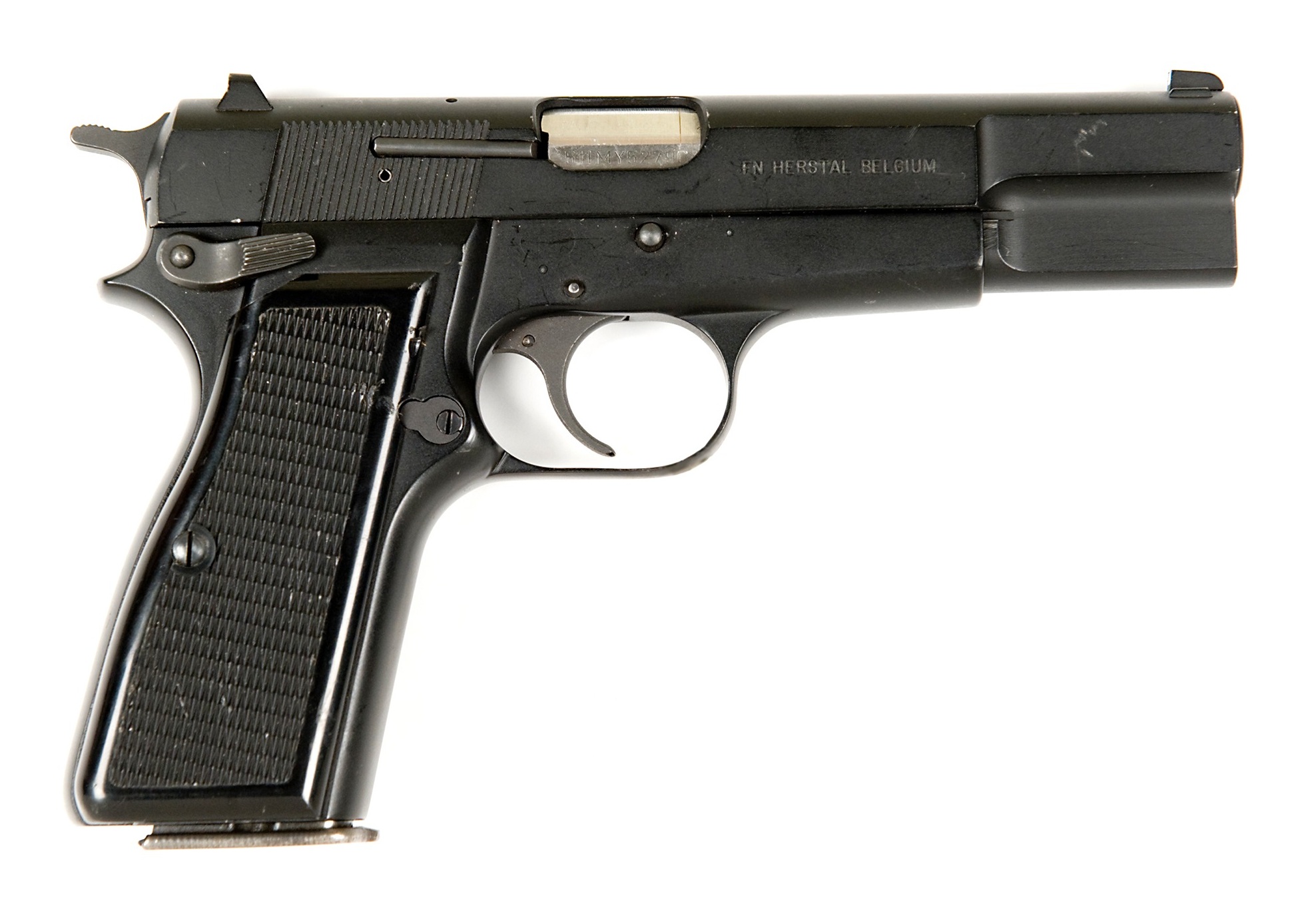
The Hi-Power’s origins date back to the 1920s, when the French military required a new pistol. John Browning, whose work in the late nineteenth and early twentieth centuries did much to advance the gun industry, was selected to design the pistol. While France did not end up adopting it, the Belgian Army did in 1935 as the P35; it was the Fabrique Nationale Herstal (or FN) factory of Herstal, Belgium, which named the pistol ‘High-Power’ in reference to its high-capacity magazine. After conquering Belgium in May 1940, the Nazis went on to produce over 300,000 of the pistols out of the FN factory.
However, plans for the gun were sent from the FN factory to the U.K. before it became clear that Belgium would fall to the Nazis, and were subsequently sent on to Canada. FN went on to produce the handgun for Allied forces via a John Inglis Company plant in Toronto, where the weapon began to be called ‘Hi-Power.’ In the decades following the war, Hi-Power was used by countries the world over, including the U.K. and many of its Commonwealth nations. It also became a favorite sidearm of some notable individuals, including Saddam Hussein.
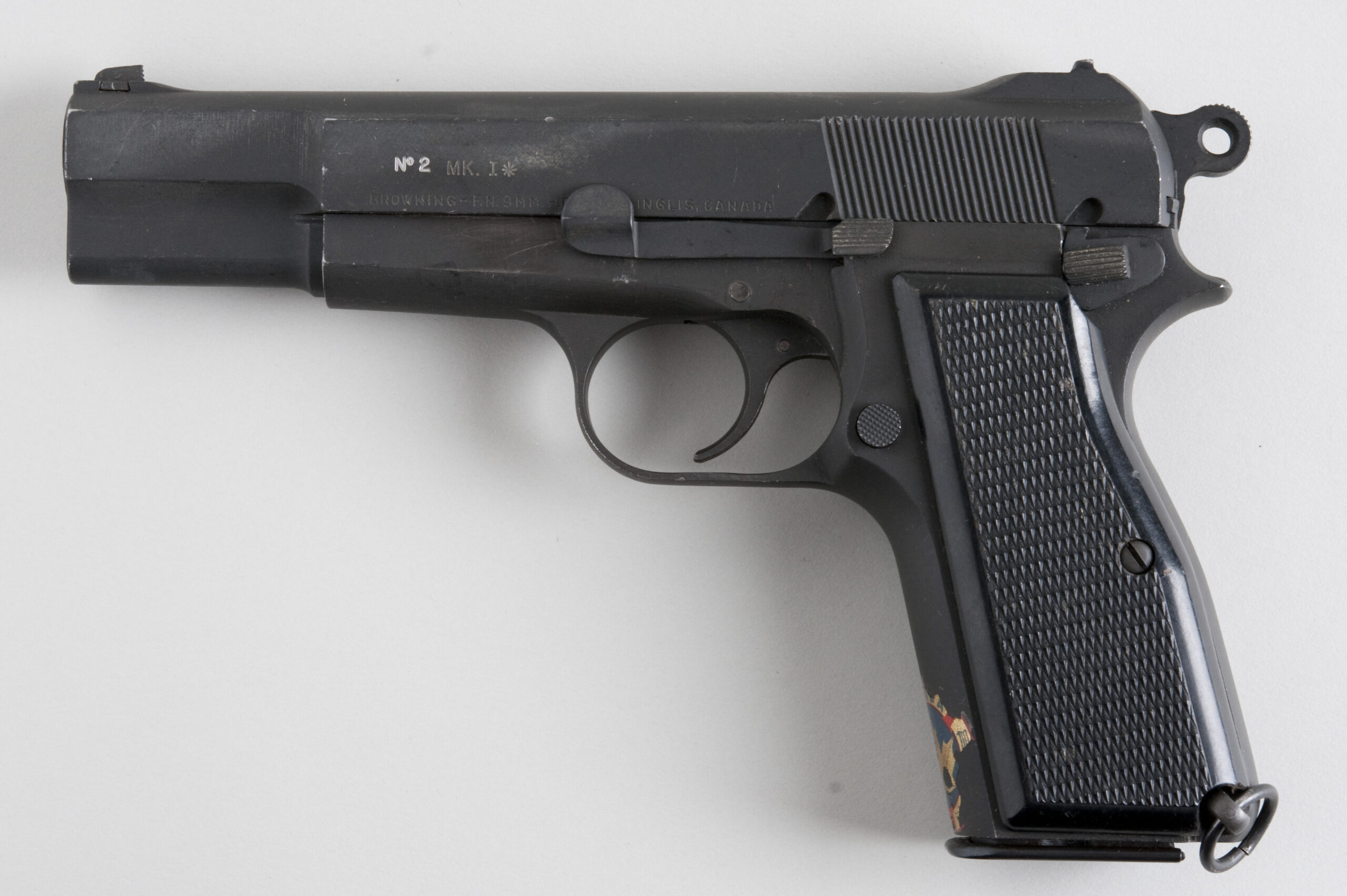
Canada’s John Inglis Hi-Powers were all produced between February 1944 and October 1945. FN continued the original production line of the pistol until 2018. However, such was the popularity of the handgun that FN America brought an all-new Hi-Power back into production just a few years later.
According to the Department of Defense spokesperson, all units currently using the pistol will send them to Canadian Forces supply depots in Quebec and Alberta for disposal over the coming months. It’s been previously suggested by officials that the pistols will likely be destroyed via smelting.
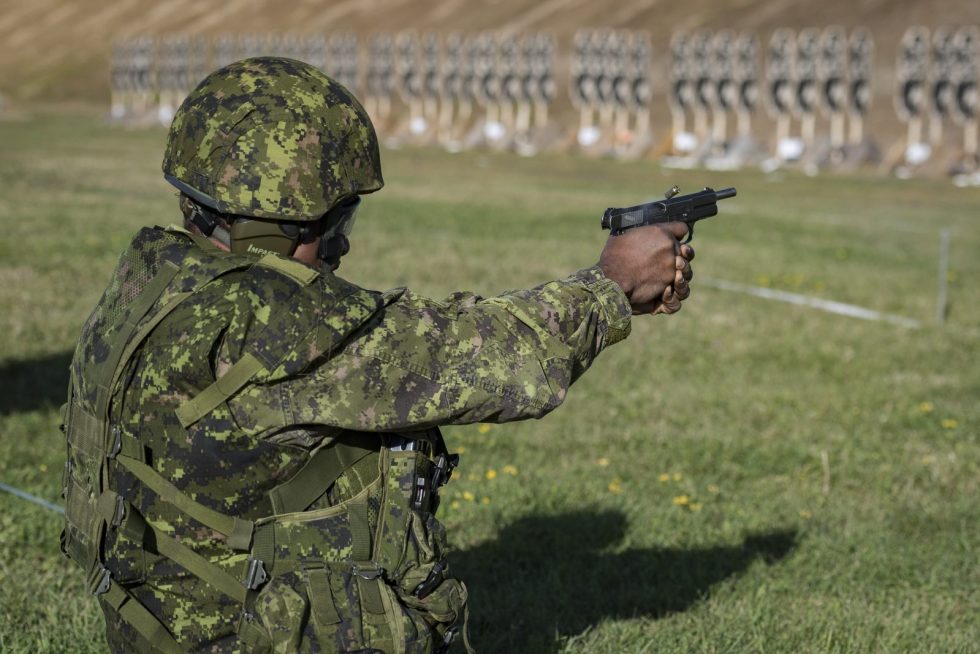
While the end of Canada’s long history operating the Hi-Power is now fast approaching, the road to getting there has been anything but smoothly paved, with more recent efforts to replace them dating back to the late 2000s. The Canadian Department of National Defence had planned to order a minimum of 8,000 new pistols in 2011, with options for up to 16,500, for the Canadian Army, Royal Canadian Air Force, and Royal Canadian Navy. However, the initiative was canceled, as foreign firearms manufacturers proved reluctant to divulge technical data packages with Colt Canada for local production.
The search resumed in 2017, and in 2021 the Canadian government requested bids for a new pistol to replace the Hi-Power. However, due to the filing of a complaint by Rampart International of Ottawa — which represents handgun manufacturer Glock in the Canadian market — that claimed the competition favored Glock’s rivals, Beretta and Sig Sauer, the Canadian government canceled its solicitation.
Ultimately, Sig Sauer’s P320 pistol — known as C22 in Canadian military service — was selected to replace the Canadian military’s Hi-Powers in October 2022. Canadian Special Operators were already known to be using that weapon before then, however; notably due to an incident in November 2020 when a member of Canada’s counter-terrorism unit Joint Task Force 2 accidentally shot themselves with one of the pistols.

A semi-automatic, short recoil-operated pistol that uses the same ‘Browning action’ and 9×19mm Luger ammunition as the Hi-Power, but fed from a higher-capacity 17-round magazine, the P320 is striker fired. The pistol is polymer framed, which is a massive deviation from the all-steel Hi-Power. Over the past decades, Polymer pistols have become the norm within the handgun industry — affording high durability and reduced maintenance requirements along with lower cost and weight.
The P320 is totally modular. The serialized part is actually the fire control module that sits inside interchangeable grip modules. This is a huge selling point for the P320 series. You can read more about the P320 in this past War Zone piece.

The first batch of 7,000 C22s were handed over to Canadian forces in 2023, per Sig Sauer. With the completion of C22 deliveries on March 6 of this year, a grand total of 16,500 new examples of the pistol have been received by the Canadian military. 3,200 new P320s for use by the Canadian Military Police Group, known in service as the C24, have also been received. The C24 is built on the Sig Sauer P320 platform, specifically the carry frame, in contrast to the C22, which utilizes the full frame design.
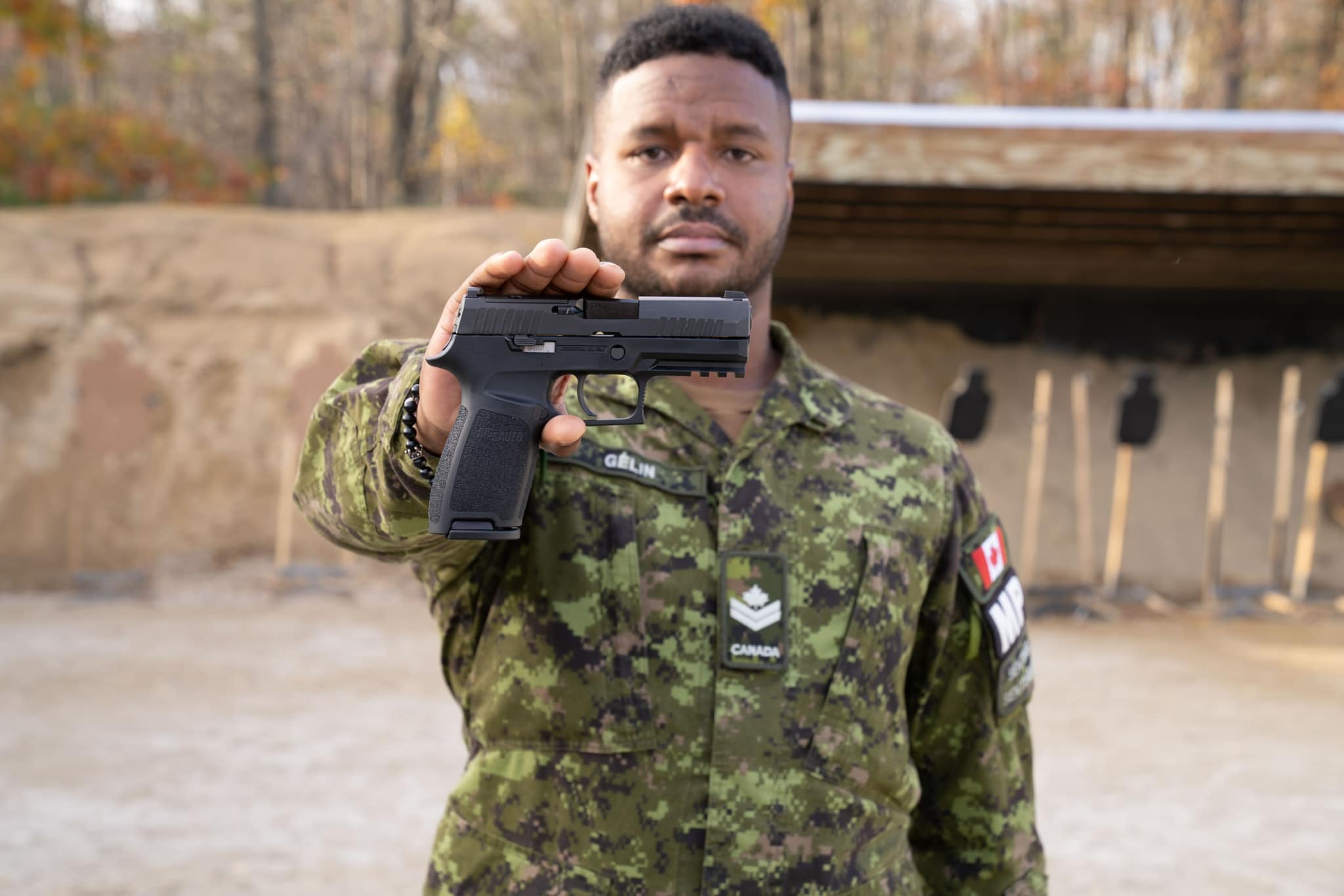
The collective procurement of C22s and C24s constitutes a $19.4 million “investment into ensuring our members are well equipped to support operations,” according to the Canadian Armed Forces.
Now that the final deliveries have been completed, Canada joins the plethora of international users of the P320. In 2017, the U.S. Army selected the P320 to replace the Beretta M9 as its primary service pistol following the Modular Handgun System (MHS) competition. Two basic configurations of the MHS P320 are named the M17 (full size) and M18 (carry). The other services have followed suit. It is also currently used extensively by U.S. law enforcement agencies and police, and is also one of the most popular guns on the U.S. civilian market.
Other international military users include the Australian Defense Force — which also selected it to replace the Browning Hi-Power — and the Armed Forces of Ukraine, while police services the world over also rely on it.
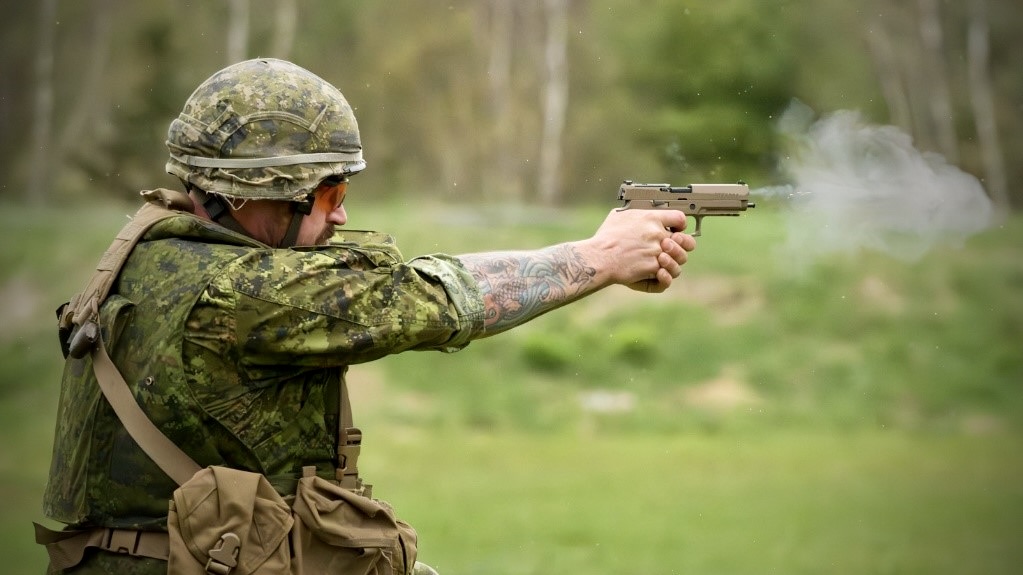
However, there is some light at the end of the tunnel for Canada’s Hi-Power pistols, as not all of them will be destroyed. In the region of 150 are to be set aside for distribution to various museums, although this has not yet occurred, the spokesperson for Canada’s Department of Defense told the Ottawa Citizen.
Some may actually be kept for a number of specialist purposes, too. “The Canadian Army keeps a small stock of older small arms and small arms in service in other countries to assist with training for emergency situations and for recognition,” the spokesperson said. “The Browning may also retain some training value as a simulation/training tool.”
So while the majority of Canada’s long-serving Hi-Powers will bite the dust in the months ahead, it’s possible that a small number could soldier on into 2025 and beyond.
Contact the author: oliver@thewarzone.com
